Oliver Exterminating’s integrated Pestfree365 program recognizes that pests need shelter, food, water, and a way of getting into your home in order to gain a foothold. Deny pests like ant…
Continue reading5 Services Offered at Rentokil, formerly Oliver Exterminating
Puerto Rico pest control specialists at Oliver Exterminating Services have been enabling Puerto Rico residents to remain pest free since 1956.
In fact, the specialists at Oliver Exterminating Services feel so confident in their ability to remove p…
Continue readingPestfree365 with Rentokil, formerly Oliver Exterminating
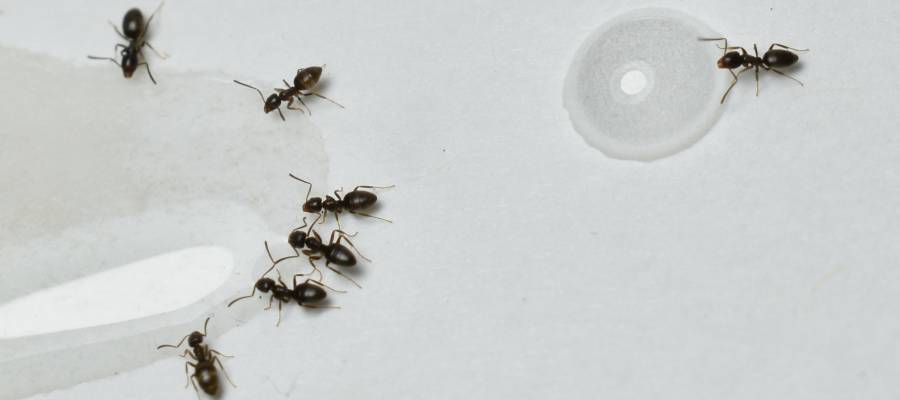 There’s a reason that Rentokil, formerly Oliver Exterminating, has been Puerto Rico’s leader in pest control since 1956. Beyond our commitment to staying ahead of the curve in technology, practice, and environmental sensitivity, we also commit to keeping our patrons pest-free all year long. Our Pestfree365 program is a hit among our most loyal customers. Covering dozens of types of pests around San Juan PR, our technicians have an answer for your infestation. Read on to learn more about our services!
There’s a reason that Rentokil, formerly Oliver Exterminating, has been Puerto Rico’s leader in pest control since 1956. Beyond our commitment to staying ahead of the curve in technology, practice, and environmental sensitivity, we also commit to keeping our patrons pest-free all year long. Our Pestfree365 program is a hit among our most loyal customers. Covering dozens of types of pests around San Juan PR, our technicians have an answer for your infestation. Read on to learn more about our services!
What Kinds of Pests in San Juan Are Covered?
Unfortunately, our climate creates perfect breeding grounds and feeding situations for all sorts of regional pests. With many insects and arachnids’ ability to proliferate quickly and spread their populations wide, it’s crucial to stay on top of DIY pest prevention if you aren’t covered routinely by professional exterminators. If you sign up for Pestfree365, the technicians at Rentokil, formerly Oliver Exterminating, will be able to handle these pests for you:
- Rodents
- Ants
- Bed Bugs
- Cockroaches
- Bees, wasps, and hornets
- Fleas, ticks, mites and many more
What Can You Expect from Pestfree365?
We’ve talked to a few members of our Pestfree365 program about their hesitance to sign up for a year-round prevention program. While this is understandable, this perspective often comes from people who haven’t had to pay hundreds or even thousands of dollars repairing damage caused by termites, rodents, and more pests that thrive around San Juan PR. Here are a few of the benefits that you will receive after signing up for Pestfree365:
- Limitless service calls: Whenever you’re dealing with a pest problem, no matter how big or small, we will be out to help you. Even if you fear for an upcoming pest season, we can come out to your property to help you prepare your home or business properly!
- No contract: You are not paying in advance for a year-long, non-refundable service. We have to continue to earn your business with top-tier work and professionalism with every visit.
- Professionalism: Speaking of top-tier, every one of the technicians serving your property will be licensed, certified, and trained to the highest standards of the pest control industry.
- Termite and bed bug protection: Some pest control companies avoid dealing with these two pests for the simple fact of how difficult they can be to control. We don’t back down from these destructive insects! You’ll receive an annual termite inspection (WDI report) and any necessary bed bug removal treatments.
Year-Round Pest Control in San Juan
If you’re looking to maintain a pristine property free of pests, your best bet is to work with your local pest experts at Rentokil, formerly Oliver Exterminating. Our Pestfree365 service is the best in the business for prevention, exclusion, and control of almost 40 local pest species. Contact us today for a free quote!
Pests in Puerto Rico to Avoid [2021 Update]
Fall is once again upon us. Pumpkin spice, homework, packed lunches, fallen leaves, and warm sweaters are all in season. When the weather turns, many different kinds of critters are looking for warmth too.
Rodents like mice and rats can make their…
Continue readingDangers of Termites and Why You Shouldn’t Delay Their Termination
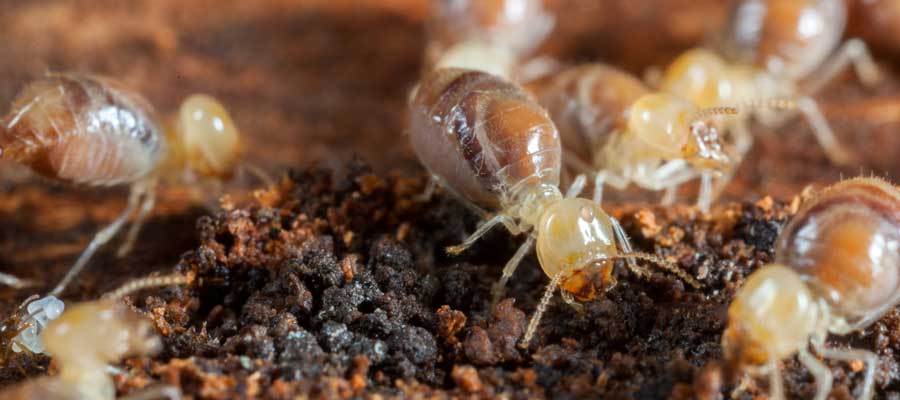 Termites are one of the most feared pests in our region, not for their ability to bite, sting, or cause harm to us, but for their habits of wreaking havoc on our homes. The National Pest Management Association estimates that termites cause over $5 billion in damage in the United States every year! What’s more, they do so stealthily, often building up colonies in peoples’ homes that last for years without being discovered. If you are worried about a possible termite infestation in your home, this advice from our termite experts will reinforce that you should have that checked out sooner rather than later.
Termites are one of the most feared pests in our region, not for their ability to bite, sting, or cause harm to us, but for their habits of wreaking havoc on our homes. The National Pest Management Association estimates that termites cause over $5 billion in damage in the United States every year! What’s more, they do so stealthily, often building up colonies in peoples’ homes that last for years without being discovered. If you are worried about a possible termite infestation in your home, this advice from our termite experts will reinforce that you should have that checked out sooner rather than later.
What Do Termites Do?
Termites are infamous for chewing through the wooden structures of homes. Out in the wild, this is a huge benefit to their ecosystems, as the deterioration of old trees allows for a redistribution of nutrients in the surrounding soil. Many people think that because termites prefer to eat wood cellulose, their primarily brick or alternate material homes are safe. However, this is not the case.
Termites are able to find and chew through any kind of wood in our homes, including:
- Baseboards, moulding, and siding
- Tables and chairs
- Cabinets, dressers, and closets
- Hardwood floors, and more
Termites can even damage window plaster and siding made out of metal. Of course, homes with more wood are more liable for termite damage, but it’s better to be safe than sorry when it comes to termites.
Signs of Termites in Your Home
Unfortunately for us, termites like to move in secret. It can be difficult to detect a termite infestation in your home before they cause a serious amount of damage. What’s more, some species of termites do most of their work underground—subterranean termites are the most common and the most destructive species of termites in San Juan PR. Although it might be too late to avoid expensive repairs once you’ve seen these, here are some signs that termites are active in your home:
- Swollen-looking floors or ceilings
- Buckling wood
- Blemishes that look like water damage
- Mazes of layers in walls or furniture
Need Professional Termite Control in San Juan PR?
If you’re looking for an expert termite exterminator in San Juan PR, look no further. Our technicians at Rentokil, formerly Oliver Exterminating, are trained to not only remove active infestations but prevent future ones. With decades of experience and the most effective termite control products available at our disposal, we are proud to be the most reliable termite exterminators in the area. For a free quote or to learn more about our termite control treatments, contact us today!
Termites & Mold
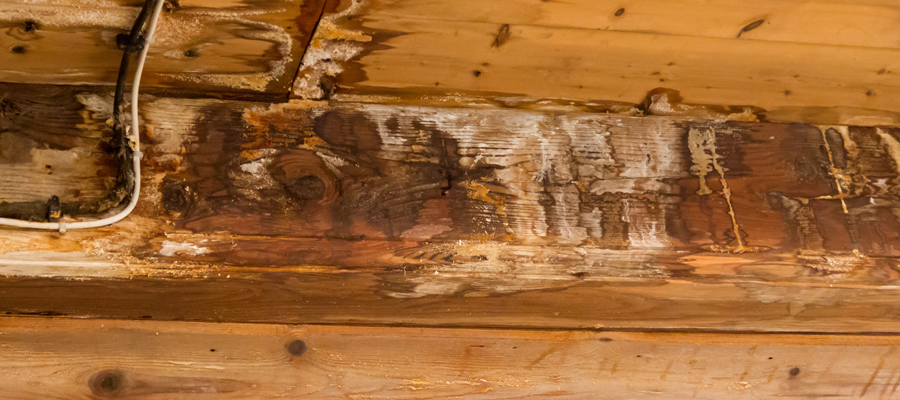 Termite infestations and mold problems are two things no homeowner wants to deal with. Unfortunately, they often occur at the same time. In Puerto Rico, discovering a termite infestation can mean discovering not just wood damage, but mold problems as well. This is because mold and termites are both common in areas with decaying or rotting wood.
Termite infestations and mold problems are two things no homeowner wants to deal with. Unfortunately, they often occur at the same time. In Puerto Rico, discovering a termite infestation can mean discovering not just wood damage, but mold problems as well. This is because mold and termites are both common in areas with decaying or rotting wood.
At Rentokil formerly Oliver Exterminating, we know termites are distressing, and that a mold problem can endanger your family. Read on to learn all you need to know about the presence of both in your home.
Are Termites Attracted to Mold?
Termite infestations and mold often are found in the same environments because they’re both typically a consequence of rotting or decaying wood. Both termites and mold require dead wood to survive, which is why they tend to inhabit the same structures. Termites and mold thrive in moist conditions with an abundance of cellulose, which is why both problems are typically discovered at the same time. However, termites do not cause the mold themselves. When you discover termites in your home, it’s simply common to also discover mold.
Will Mold Make Me Sick?
Mold is a fungus that forms in damp conditions, often in the aftermath of a leak or flood but occasionally just when wood is in decay. The reason why mold is so dangerous is that it releases spores into the air that can contaminate your indoor air quality. In turn, mold is infamous for contributing to respiratory conditions, including wheezing, and triggering asthma attacks. Mold in your home can lead to unsafe living conditions for you and your family. If you discover a termite problem, it’s best to also have your home inspected for possible mold or fungus issues.
Termites in Puerto Rico
Termites and mold are two things no homeowner wants to deal with, especially at the same time! The best way to protect your Iowa property is to team up with your local termite control experts. Your Rentokil team will work with you to ensure your home is protected against the dangers of mold and termites.
Signs You May Have Termites in Puerto Rico
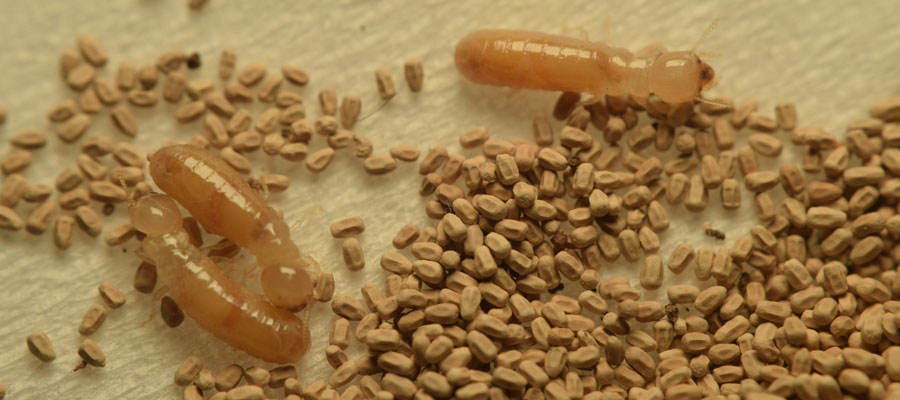
Termites are one of the biggest pest problems in Puerto Rico. Unfortunately, it is rare to see termites themselves, making it hard to know you have a problem until damage has been caused. While homeowners likely won’t notice termites, they can possibly notice the evidence of their activity. By knowing how to recognize the signs you may have termites, you can better protect your property from a full-blown infestation. The termite pros at Rentokil formerly Oliver Exterminating are here to share all you need to know about the signs of termites in or near your home.
Most Common Signs of Termites
- Termite swarms. Every year, reproductive termites (also known as alates and swarmers) will leave their colony to mate and form new ones. Swarmer termites are frequently mistaken for other flying insects, especially carpenter ants. Seeing winged termites in the spring or summer months is a common sign of termites spreading.
- Piles of shed wings. After they swarm, the reproductive termites no longer need their wings. So, they will shed them! Termite wings are all the same size and translucent in color. After being shed, they can often appear in a pile together.
- Termite droppings. As they tunnel through dry wood as well as when they swarm, drywood termites create kick-out holes in the wood. This is when their droppings, also known as frass, can be found. Termite frass most closely resembles sawdust or coffee grounds and can appear in groups.
- Mud tubes. Subterranean termites nest underground but use mud tubes to travel. These pencil-sized tubes protect the termites from outdoor elements as it blocks out cool, dry air. Seeing mud tubes along the outside of your property is likely the number one sign of termites.
- Termite damage. Seeing damage caused by termites is indicative of a serious infestation. Damage most frequently appears in wood around the home. Common damage includes unexplained cracks on walls, beams, and rafters. It can cause sagging wood in your floors, as well as hollow-sounding wood. Sometimes wood damage can lead to weakened baseboards and floorboards.
Think You Have a Termite Problem?
As soon as you spot any of the above signs of termites, it’s time to call in the experts. A trained termite technician knows exactly where to look for termites and can help identify potential problems. To learn more about termites here in Puerto Rico, give the termite exterminators at Rentokil a call today.
Afraid of Rodents and Bugs? 2021 May Not Be Your Year
 Entomologists from Rentokil Provide their Pest Predictions for 2021
Entomologists from Rentokil Provide their Pest Predictions for 2021
READING, Penn. (Jan. 4, 2021) — As if 2020 didn’t present enough challenges during the COVID-19 pandemic, 2021 could be a banner year for pests around the country.
To help residents prepare for 2021, entomologists from Rentokil used field knowledge and data to provide their predictions for pests in the upcoming year.
1. Rodents, Rodents Everywhere:
With shutdowns across the country, it’s no surprise that rodents are on the rise nationwide. Empty buildings, the scarcity of food and warmer winters have combined to create a rodent apocalypse.
“We’re seeing more rats in urban, suburban and rural settings because of the shutdowns,” said Marc Potzler, Board Certified Entomologist. “Food sources are cut off, and rats are having to travel to scavenge for food. We’ve seen rats out in public during the day, which is highly unusual.”
Warmer winters have also allowed for mice populations to boom in residential areas as it allows for a longer breeding season and there is a lower population loss due to hard freezes.
“Right now is the perfect time to rodent-proof your home,” said Potzler. “Make sure to repair any gaps on the exterior of your home, such as around garage doors, windows or pipes.”
2. Mosquitoes on the Move:
Mosquitoes populations have been increasing over the last few years. Aedes species, which are disease-carrying mosquitoes, are also moving to new areas. These mosquitoes can carry West Nile Virus, Eastern Equine Encephalitis (EEE) and Zika virus, among other diseases.
“There is an increase of mosquitoes across the country, but notably on the West Coast, and they are adapting each year,” said Eric Sebring, Associate Certified Entomologist. “We have seen evidence of behavior adaptation, where mosquitoes lay their eggs strategically to hatch throughout the season.”
Protect yourself and your family from mosquitoes by removing any standing water on your property. Mosquitoes can breed in as little as one teaspoon of water. Also, wear EPA-approved insect repellent while spending time outside.
3. Bed Bugs:
The chatter about bed bugs was quiet in 2020, but that’s not because they have gone away.
“As people begin to travel again, we will start to hear about bed bug infestations,” said Sebring. “Bed bugs can be dormant for several months at a time, so they can emerge when a food source, humans, become available.”
Bed bugs are considered hitchhikers, traveling from place to place on people, luggage, clothing and other personal belongings. Homeowners and businesses such as hotels, colleges, hospitals, senior living facilities, retail stores, and libraries have experienced problems with bed bugs.
If traveling, inspect the bed by pulling back the sheets to examine the mattress. Check your luggage before packing and unpacking, and look for signs of living or dead bugs the size of an apple seed or black fecal smears.
4. More Time Outdoors = More Pests.
From hiking to gardening to dining al fresco, there is no doubt that the pandemic has forced people to spend more time outdoors.
In 2021, we will see the outdoor pest pressures continue:
Ticks: Ticks are responsible for transmitting several diseases, including Lyme disease, to humans and animals. These small insects are found in grassy areas and in the woods, so it is important to inspect yourself and your pets after spending time outdoors. Cover as much skin as possible while outdoors, wear long pants, long sleeves, closed-toed shoes, and tuck pant legs into socks. Light-colored clothing will also help any ticks you pick up stand out.
Ants: “As soon as the weather starts to warm up, we will see an increase in ant populations,” said Tom Dobrinska, Board Certified Entomologist. “Most of the ants we are dealing with are odorous house ants. When spending time outside, make sure to clean up any food, water or sugary substances and ensure that your home is free of any holes or cracks for them to enter.”
Stinging Insects: Stinging insects, such as wasps and yellow jackets, emerge at the first sign of warm weather, and as warm weather seasons are getting longer, stinging insects have more time to create issues. Make sure you check for nests early in the spring as they are smaller and get early nest treatment. Make sure to keep windows and doors shut, and secure outside bins so stinging insects are not attracted to the contents.
5. Termites Aren’t Going Anywhere
Termites are a pesky problem, and unfortunately, are not going anywhere. Termites can cause extensive damage to structures, especially homes. As people are moving out of cities during the pandemic to more suburban areas, education about termite protection is key.
“We received more calls for termites this past year than we have in many years,” said Potzler. “It’s important to raise awareness for homeowners now to have proactive protection to keep from costly repairs in the future.”
6. Pests in the News:
There are a few pests that will continue to steal the limelight in 2021.
The Brown Marmorated Stink Bug is an invasive pest that has been making its way across the country since it was first introduced from Asia in 2001. Besides its pungent odor, this stink bug has become a nuisance for homeowners as it gathers in large numbers on the sides of houses and buildings and enters through small cracks in the home. “The brown marmorated stink bug is here to stay,” said Dobrinska. “We will continue to see this species emerge in late spring in large numbers.”
The Spotted Lanternfly will continue to wreak havoc across the Northeast and beyond. The invasive pest, first found in Pennsylvania in 2014, is spreading across the Northeast, with New York reporting its first sighting this year. The pest can significantly damage trees and plants.
“The Spotted Lanternfly is becoming a big problem in the Northeast, and it will continue to spread,” said Potzler. “It can be devastating for agriculture and is a nuisance for homeowners.”
The egg masses look like a smear of mud on trees and outside of homes. It’s important to scrape the egg mass off, put it in a bag with rubbing alcohol and throw it away, and then call the state department of agriculture.
The infamous “Murder Hornet,” also known as the Asian giant hornet, grabbed many headlines, causing homeowners to panic trying to decipher the difference between stinging insects in their yards and this aggressive species. The Asian giant hornet is the largest hornet species in the world, growing up to 3 inches in length. Currently, the Asian giant hornet has only been found in the Pacific Northwest.
“We know that there was one colony found and eliminated in Washington State,” said Sebring. “Unfortunately, if there is one, there will be more.”
While your chances of being stung by an Asian giant hornet are fairly low, the sting can be dangerous as the venom volume is higher, causing more pain. The hives are primarily built underground or in hollows in trees. If you suspect it is an Asian giant hornet or any stinging pests, call your pest management provider to assess the situation as soon as you spot activity.
Fall & Winter Termite Activity
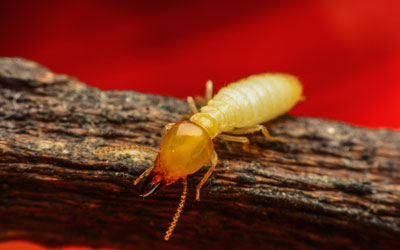 Here in Puerto Rico, we are accustomed to dealing with certain pests all year long. Termites are one of the most destructive pests and, unfortunately, they are active all year long. Many make the mistake of thinking that these pests are only active in the spring and summer, but this is because they’re often seen swarming. A termite colony can infest and continue to chew its way through a structure in the fall, winter, spring, and summer. Due to this fact, it’s crucial to stay vigilant about termite prevention all year long. The team at Rentokil, formerly Oliver Exterminating is here to help.
Here in Puerto Rico, we are accustomed to dealing with certain pests all year long. Termites are one of the most destructive pests and, unfortunately, they are active all year long. Many make the mistake of thinking that these pests are only active in the spring and summer, but this is because they’re often seen swarming. A termite colony can infest and continue to chew its way through a structure in the fall, winter, spring, and summer. Due to this fact, it’s crucial to stay vigilant about termite prevention all year long. The team at Rentokil, formerly Oliver Exterminating is here to help.
Do Termites Go Dormant in the Fall?
Unlike other pests, termites do not go dormant in the colder parts of the year. In fact, they remain as active as ever in the fall and winter. The queens lay eggs year-round and at a steady rate. This means that termite colonies will not only stay active but continue to grow during the fall and winter. Maturity is the number one determinant in a colony’s ability to damage your home. A two to four-year-old colony can cause damage in your property any time of the year.
This being said, termites need to stay warm in colder temperatures, which is why they will nest 25 to 30 feet down in the soil during the winter. This is why it’s unlikely to see termites this time of year. However, you can certainly still notice any damage caused by a termite infestation.
Signs of Termite Infestations
If you start to notice termite damage, you likely have a termite infestation on your hands. In the fall, winter, and all other seasons, it’s important to look for the following signs of termite damage in your property:
- Ceiling/wall discoloration
- Termite frass (feces)
- Sagging sheetrock
- Buckling floors
- Loose tiles
- Bubbled floors
- Holes in drywall
- Crumbling wood
- Hollow windows and/or doors
- Shed swarmer wings
How to Get Rid of Termites in the Fall
The best form of termite control is regular preventative maintenance. At Rentokil, our goal is to stop a termite problem before it starts. We have a number of termite treatment options to keep you protected from termites in the fall and all year long. Contact our termite exterminators today to learn more!
These Actions Could Be Attracting Termites
Termites are a major problem for homeowners. Not only do they cause a lot of damage, it can be difficult to get rid of termites without the help of a professional termite exterminator. To avoid dealing with these pests, it’s important to know what attracts them to your property in the first place.
Continue reading Entomologists from Rentokil Provide their Pest Predictions for 2021
Entomologists from Rentokil Provide their Pest Predictions for 2021